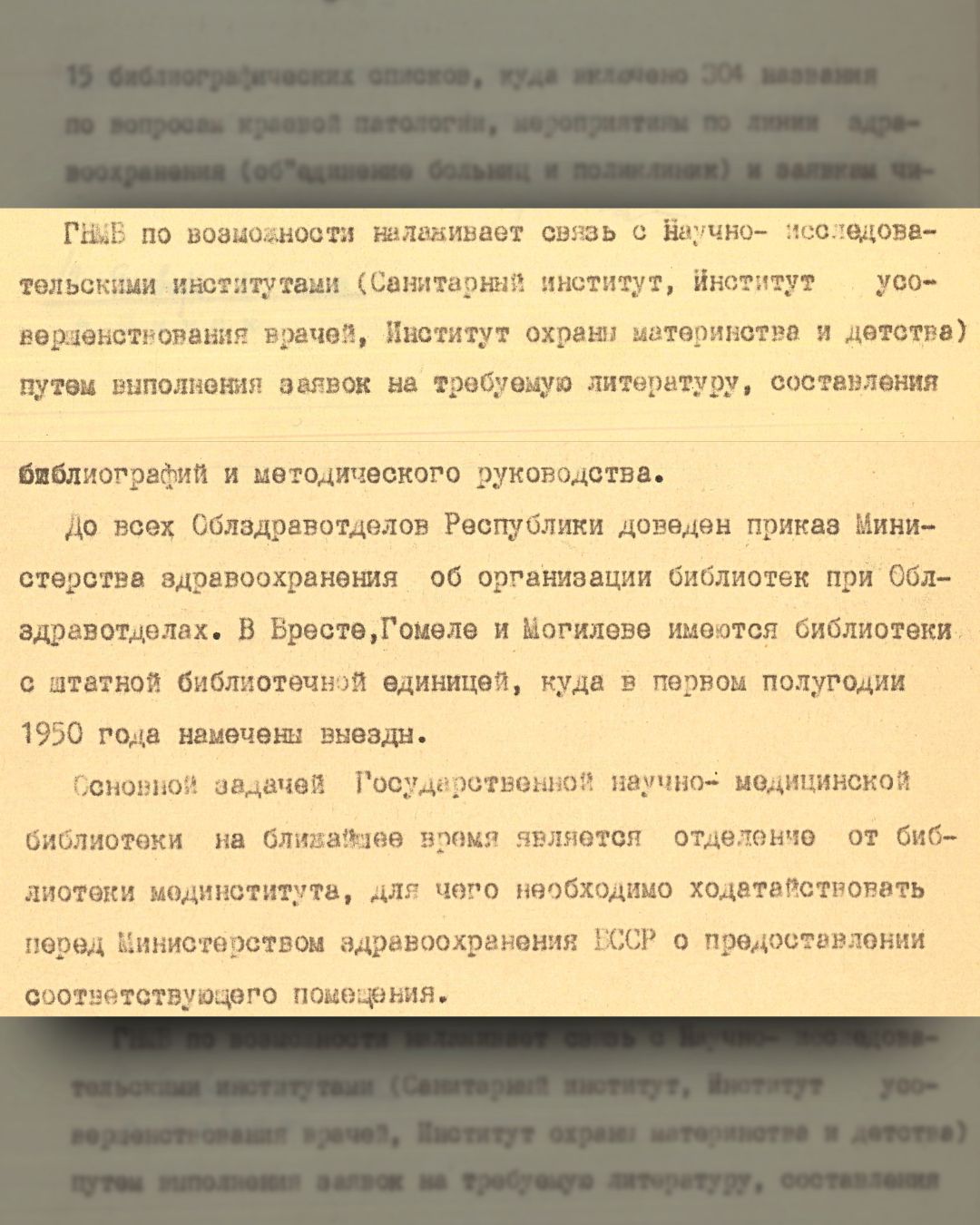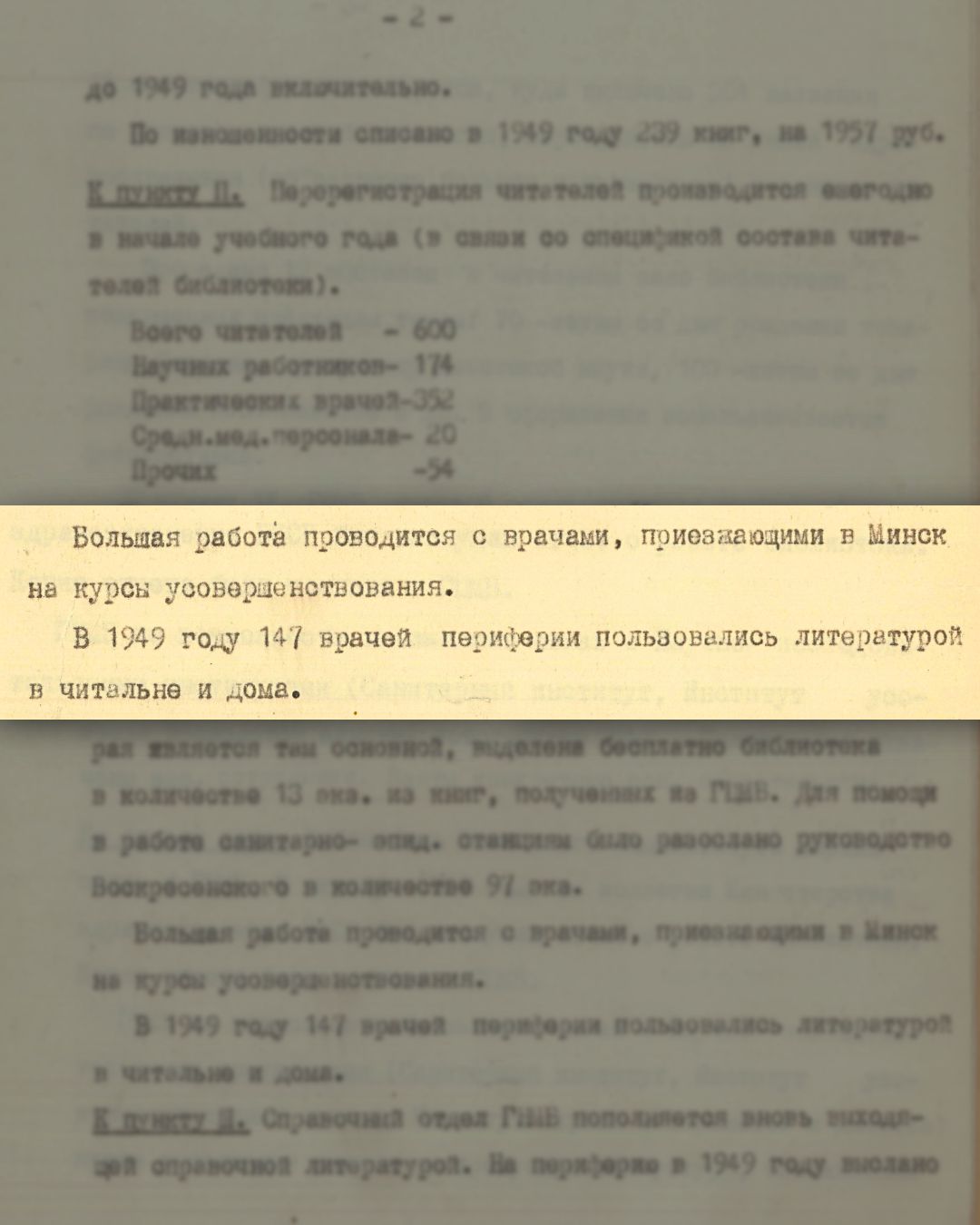The library continued to grow: its collections expanded steadily, and the number of readers rose with confidence. By now, books were arriving not only from Minsk and Moscow but also through exchange funds with other Soviet republics, giving doctors access to a broader range of literature.
Particular attention was paid to specialists from the regions. One hundred forty-seven doctors who came to Minsk for professional development courses were able to use the library’s resources both in the reading room and at home. By the end of the year, the library had 600 registered readers, including 174 researchers and 352 practicing physicians.
Full-fledged library structures had also appeared in Brest, Gomel, and Mogilev, where methodological support visits were planned for the following year.
Another important area of activity was the development of cooperation with research institutes. The library fulfilled literature requests and prepared bibliographies for the Sanitary Institute, the Institute for Advanced Training of Physicians, and the Institute for Maternal and Child Health.
One of the year’s key issues was the separation of the library from the Medical Institute. With growing collections and increasing responsibilities, the library required its own independent premises. A petition to the Ministry of Health was the next step toward achieving this independence.
By 1949, the SSML had firmly established itself in the professional community, becoming a vital center of knowledge, information, and methodological support for physicians and scholars across the republic.




